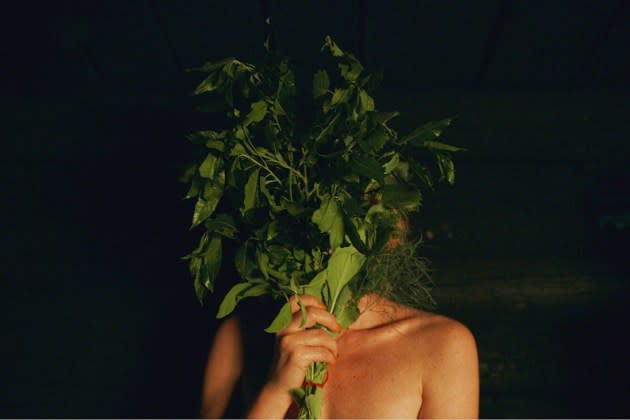‘Smoke Sauna Sisterhood’ Review: Women Come Clean in Estonian Oscar Entry’s Up-Close Look at a Purifying Ritual

When Smoke Sauna Sisterhood opens, in deep winter, the forest scene might be something by Currier & Ives: a snow-frosted cabin surrounded by tall trees, the aesthetic perfection approaching kitsch. But there’s also the ferocity on the face of Kadi Kivilo, captured in tight close-up, as she hacks away at the surface of a frozen lake. Spending time through the seasons with Kivilo and the other women who share a remote sauna with her — and take turns immersing themselves in the natural plunge pool she’s carved out — Anna Hints’ documentary strikes a bold balance between intense intimacy and respectful distance.
At the heart of the handsome film is a living tradition, the smoke sauna of Estonia’s Vana-Võromaa region, a custom that’s been recognized by UNESCO as an intangible cultural heritage. The sauna is “a sacred place where you cleanse yourself,” as the eldest woman in the film describes it. It was also once the place where women gave birth. In Hints’ film, it’s a crucial place for the ongoing process of giving birth to oneself: Adopting the practice of the long sweat, rubbing themselves with coarse salt, gently “beating” one another with leafy birch branches, these modern women are also collectively shaking off such passed-down traditions as female shame and submissiveness. The talk they exchange isn’t small.
More from The Hollywood Reporter
BBC Subscription Podcast Service Launches in 166 New Countries
How Gen Z Is Driving the Adoption of Generative AI in the U.K.
Whether the subject is childbirth, abortion, facing a cancer diagnosis or undergoing the horror of a stillbirth, the women’s comments reveal cultural and personal specifics and universal truths about the female experience. (Hints is among the onscreen participants.) They listen to one another’s wrenching confessions and harrowing memories, and their receptive silences are a kind of embrace. Secrets are released from shadows: a grandmother’s physical and emotional abuse by her husband; a mother’s frightening, erratic cruelty; a teenage girl’s rape. There are bursts of bonding laughter, too, over such absurdities as the pressure from relatives to find a mate, or being on the receiving end of a stranger’s unasked-for dick pics, or comic efforts to comply with a partner’s silly sex-talk directives.
And perhaps there’s a touch of the playful and wry, as well as the celebratory, when Hints shifts from a cancer survivor’s pronouncement that “the soul cannot be cut away” to scenes of the women butchering meat for a feast.
Flesh is the key visual subject of the doc, its elemental material, from the pudgy sweetness of a breastfeeding infant to the gleaming, sweating skin of the women’s bodies. With the exception of Kivilo — upon whose features the impact of others’ stories unfolds — and, briefly, Elsa Saks, who recounts her recent experience of coming out to her parents, the sauna sisters’ faces are cropped out of the frame or obscured, allowing them privacy even in their nakedness. Against the darkness of the enclosed space (and overcoming the technical challenge of working in such high temperatures), cinematographer Ants Tammik’s close-ups of limbs, breasts and hair have an abstract quality at times. They’re the antithesis of a Hollywood-style glamorized ideal. The rich palette of blacks and golds is worthy of an old master’s canvas.
Estonian folk songs and chants — some heard on the soundtrack, some sung onscreen by the women — underscore the documentary’s bedrock of tradition. But in these new interpretations, they also reverberate with notes of exorcism and transformation, both personal and communal. As this striking and not always easy film ends, ritual has infused the tranquility of spring with a new vibrancy.
Best of The Hollywood Reporter

 Yahoo News
Yahoo News 